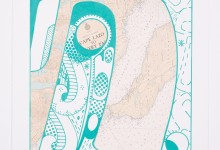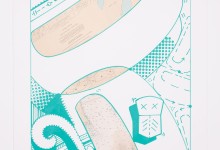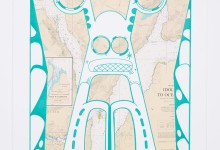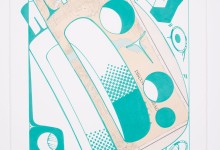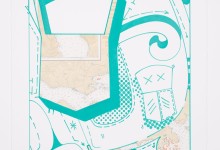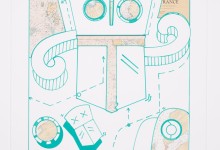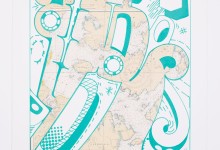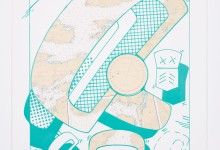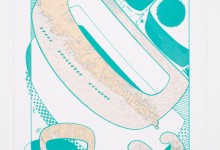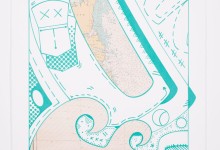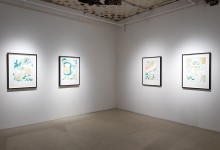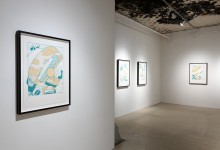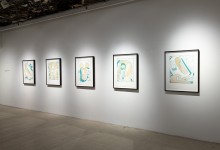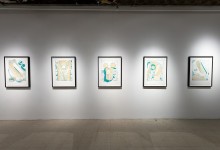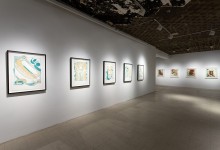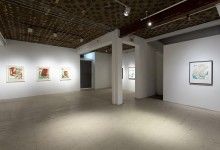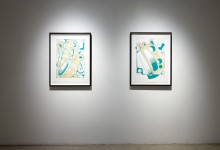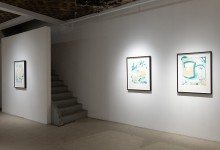Opening: Saturday, March 7, 2020 from 3 p.m. to 5 p.m.
Sonny Assu : Imaginary Lines
Text by Natalia Lebedinskaia
They make magic lines on the land that only they can see. – A Hupacasath man’s response to early colonial surveyors demarcating the boundaries of his reserve.
Sonny Assu’s childhood summers were spent on a his grandfather’s commercial fishing boat, navigating the waters along the coast of Vancouver Island. Assu would trace their boat’s movement on the navigational charts – comparing the landscape in front of him with its abstract representations in a spiral bound book. His grandfather had no need for these abstracted images of the land and water around him, he could read these places like the back of his hand.
As Assu remembers his childhood on the water, the charts’ demarcations become markers of a deeper loss: of land, resources, trade, communication, and kinship between the Liǥwildaʼx̱w, the Kwakwaka’wakw, and the other Pacific coastal Indigenous peoples that once had full reign over these territories. The maps are a source and a means of autobiographical storytelling. They are mnemonic navigational devices, acting as prompts and material for memory, both personal and collective. The charts are cut up and rearranged, bringing together Assu’s personal and familial memory of the water with the effects of colonial violence. Pieces of collage and negative space reference the fractured landscape, and the forced displacement and separation of families and nations.
The lines on the maps are distorted, twisted, and swept up within symbols that bring together the Northwest Coast symbology with the visual language of pop culture. The image of the copper shield, traditionally used to symbolize wealth and power, is adorned with crossed eyes in place of a crest: a haunting symbol of the effects of conquest and loss, of banned ceremonies and vanishing languages. Through these transformations, the maps nevertheless retain their mnemonic function: upon seeing the work, Assu’s uncle Ted immediately goes to point to all the best fishing spots. He carries this knowledge close because he was taught by his father– Assu’s grandfather who had no need for maps but whose maps are now vessels of his memory, whose traditional fishing grounds continue to be passed down through generations. Made into art, the charts still serve their purpose as tools of navigation, tracing invisible lines of memory and kinship.



